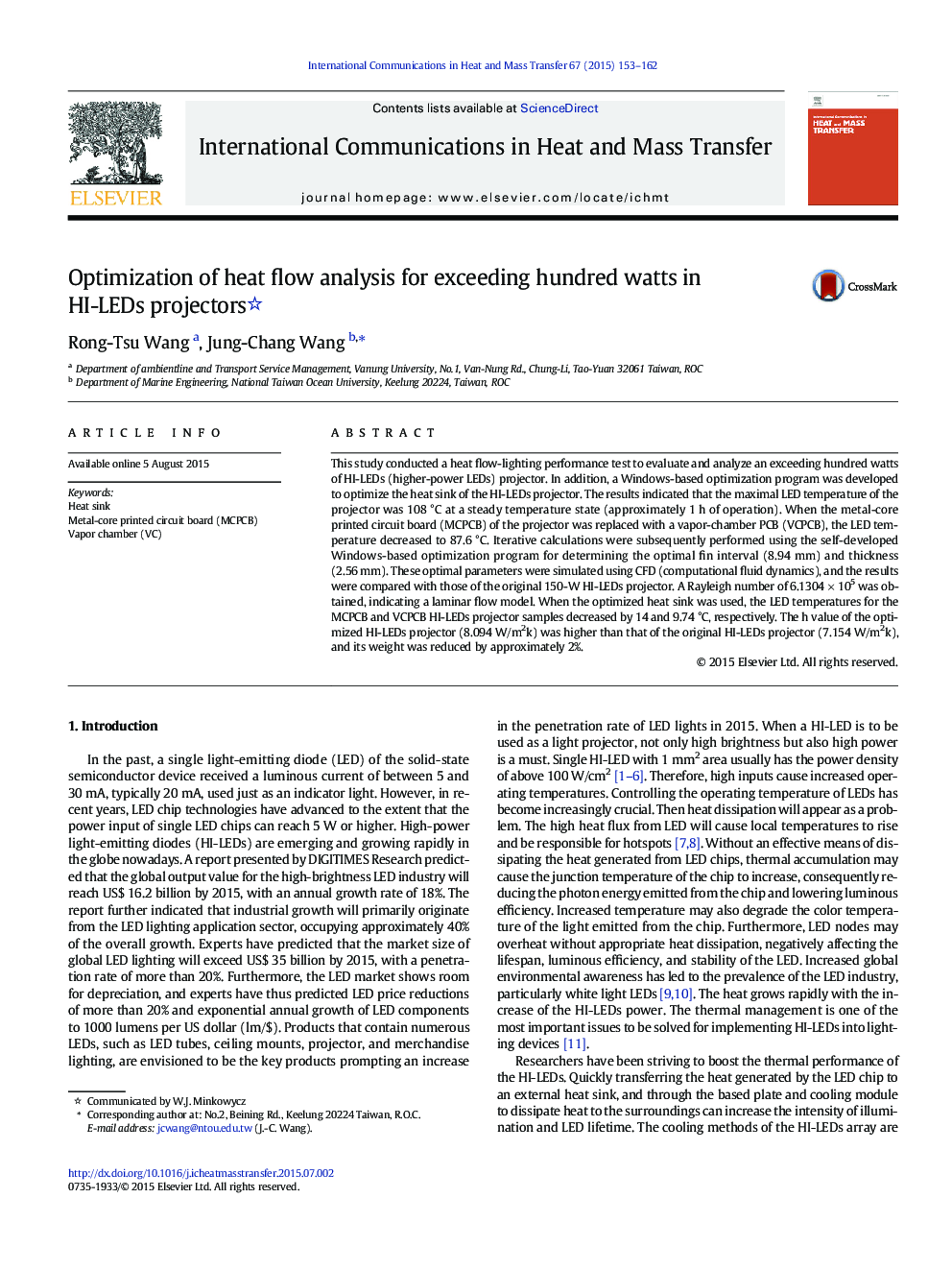| Article ID | Journal | Published Year | Pages | File Type |
|---|---|---|---|---|
| 653083 | International Communications in Heat and Mass Transfer | 2015 | 10 Pages |
Abstract
This study conducted a heat flow-lighting performance test to evaluate and analyze an exceeding hundred watts of HI-LEDs (higher-power LEDs) projector. In addition, a Windows-based optimization program was developed to optimize the heat sink of the HI-LEDs projector. The results indicated that the maximal LED temperature of the projector was 108 °C at a steady temperature state (approximately 1 h of operation). When the metal-core printed circuit board (MCPCB) of the projector was replaced with a vapor-chamber PCB (VCPCB), the LED temperature decreased to 87.6 °C. Iterative calculations were subsequently performed using the self-developed Windows-based optimization program for determining the optimal fin interval (8.94 mm) and thickness (2.56 mm). These optimal parameters were simulated using CFD (computational fluid dynamics), and the results were compared with those of the original 150-W HI-LEDs projector. A Rayleigh number of 6.1304 Ã 105 was obtained, indicating a laminar flow model. When the optimized heat sink was used, the LED temperatures for the MCPCB and VCPCB HI-LEDs projector samples decreased by 14 and 9.74 °C, respectively. The h value of the optimized HI-LEDs projector (8.094 W/m2k) was higher than that of the original HI-LEDs projector (7.154 W/m2k), and its weight was reduced by approximately 2%.
Keywords
Related Topics
Physical Sciences and Engineering
Chemical Engineering
Fluid Flow and Transfer Processes
Authors
Rong-Tsu Wang, Jung-Chang Wang,
